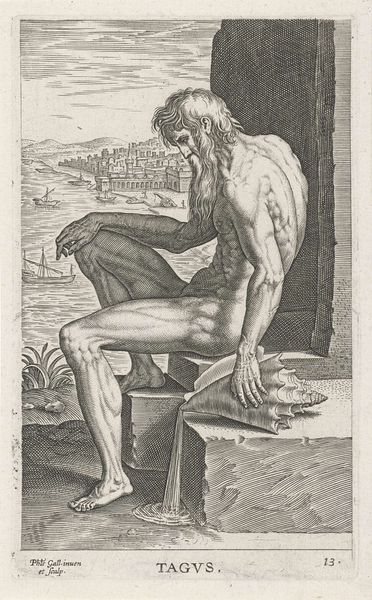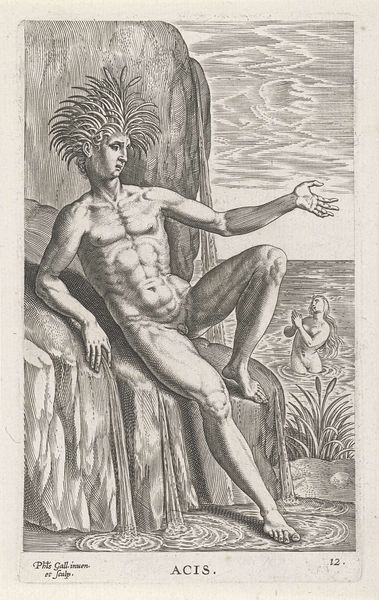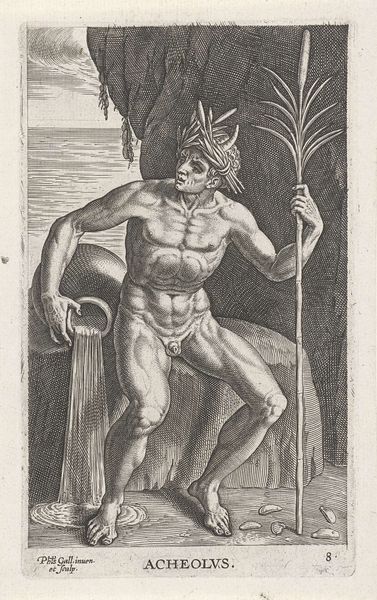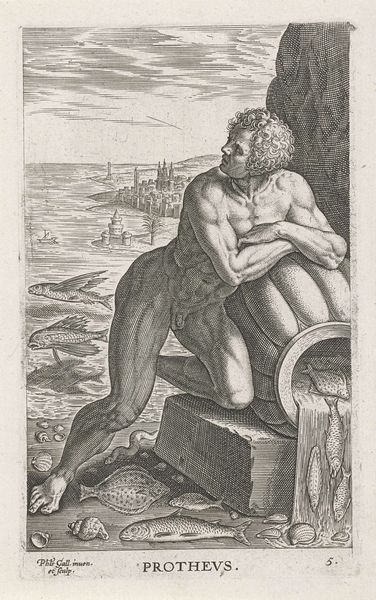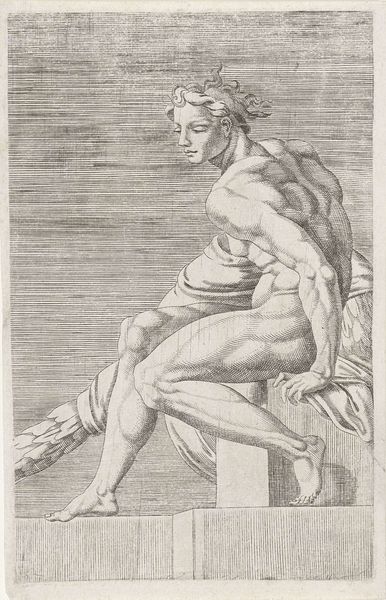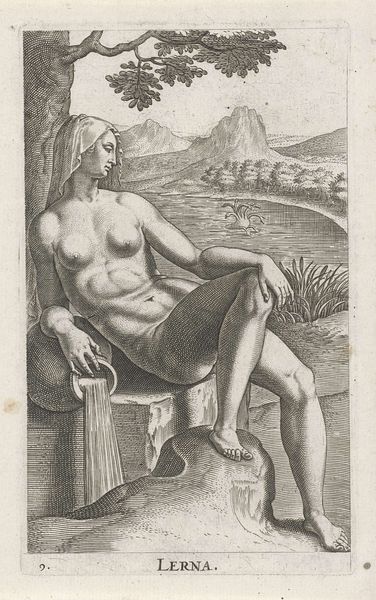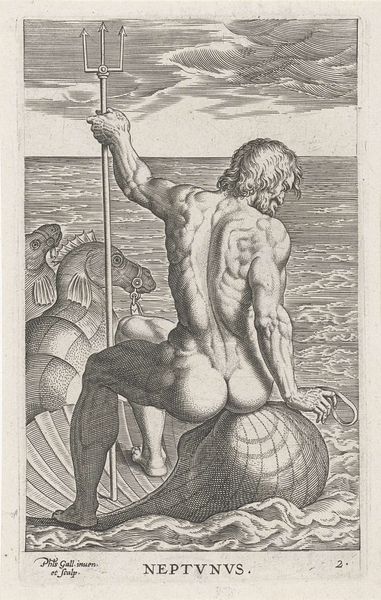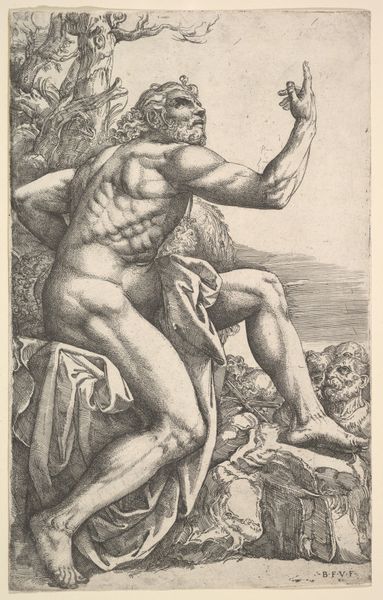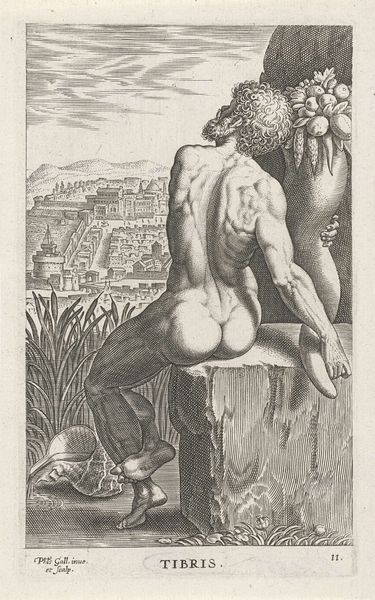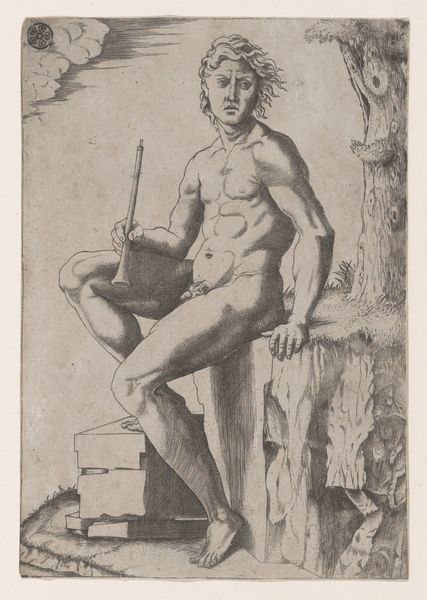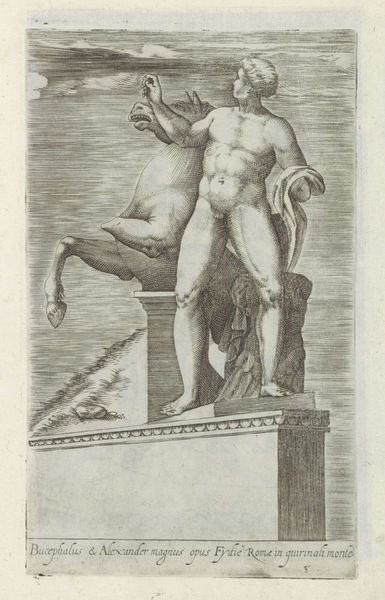
print, engraving
#
allegory
# print
#
landscape
#
classical-realism
#
mannerism
#
figuration
#
history-painting
#
nude
#
engraving
Dimensions: height 165 mm, width 102 mm
Copyright: Rijks Museum: Open Domain
Philips Galle created this engraving, "Riviergod Danubius," around the late 16th century. The eye is immediately drawn to the figure's back, sculpted with a network of lines that articulate each muscle and sinew. This emphasis on anatomical detail is a hallmark of Renaissance art. Consider the composition: Danubius is seated, yet his posture conveys a sense of dynamic movement, twisting away from us, with his gaze directed elsewhere. The staff in his hand, and the river landscape behind him, act as semiotic markers, identifying him as a river deity. His unusual head adornment, like sprouting reeds, further reinforces this symbolism, blurring the boundary between the human form and the natural world. The engraving’s formal arrangement is not merely descriptive. Instead, Galle uses the play of light and shadow to suggest depth and volume on a flat surface. This attention to form and structure echoes philosophical concerns about representation and perception, revealing how artists grappled with the challenge of capturing three-dimensional reality in two dimensions.
Comments
No comments
Be the first to comment and join the conversation on the ultimate creative platform.

